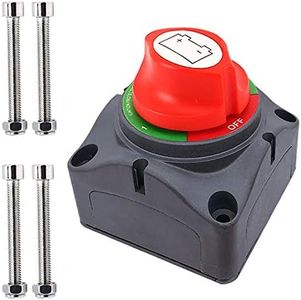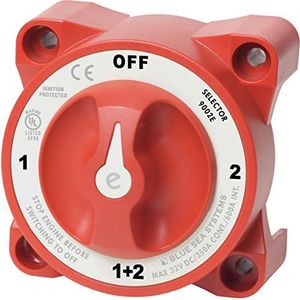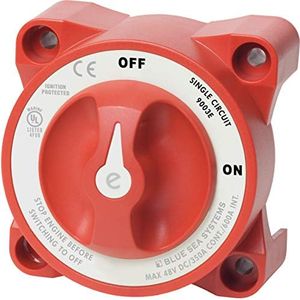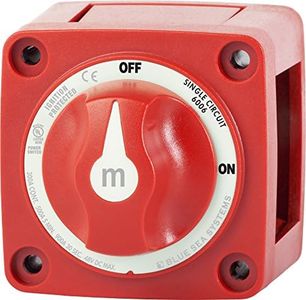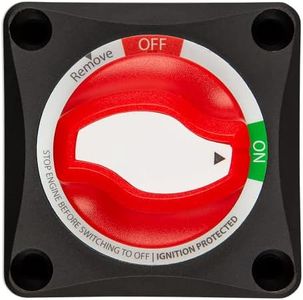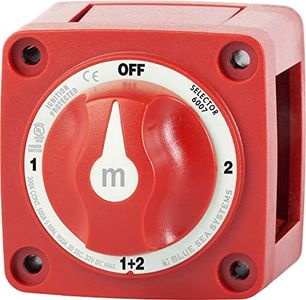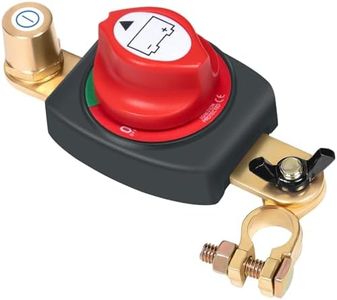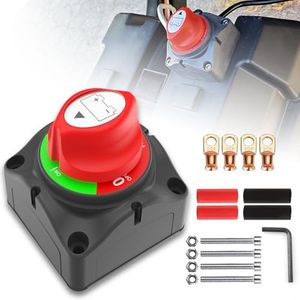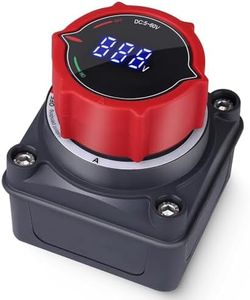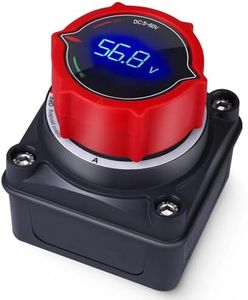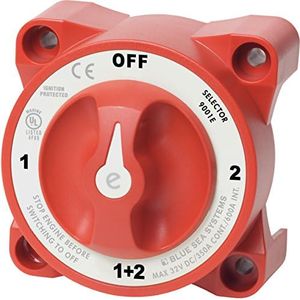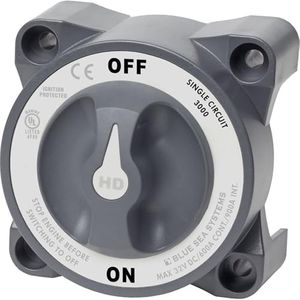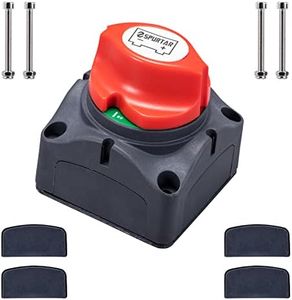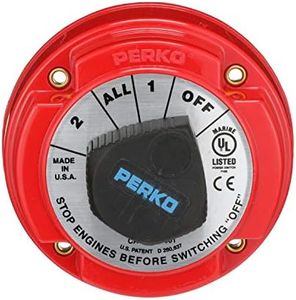We Use CookiesWe use cookies to enhance the security, performance,
functionality and for analytical and promotional activities. By continuing to browse this site you
are agreeing to our privacy policy
10 Best Marine Battery Switch
From leading brands and best sellers available on the web.Buying Guide for the Best Marine Battery Switch
Choosing the right marine battery switch is important for boat owners to safely manage their electrical systems. A battery switch allows you to control power from your boat's batteries, making it possible to turn circuits on or off, select which battery you use, or disconnect power entirely for storage or safety. Picking the right switch ensures reliable performance, helps prevent accidental power drain, and adds a layer of safety by isolating batteries when needed. Consider your boat's size, how many batteries you have, and what kind of electrical system management you need before making a decision.Switch TypeThe switch type refers to how the battery switch operates and the options it provides for controlling your batteries. There are simple ON/OFF switches and more advanced types such as 1-2-BOTH-OFF (also known as selector switches) that allow you to use battery 1, battery 2, both, or neither. ON/OFF switches are best if you only need to disconnect a single battery, while selector switches are ideal if your boat uses multiple batteries and you want to manage power distribution between them. To choose the right switch type, consider the number of batteries you have and whether you need to run them independently or combined.
Amperage RatingThe amperage rating tells you how much electrical current the switch can handle safely. You’ll find ratings like 100A, 250A, or even higher; this number needs to be at least as high as the highest current your boat’s electrical system will draw, especially when starting engines or using high-power electronics. Lower ratings (under 150A) are suitable for small boats with light loads, while larger boats or those with powerful engines should look for switches rated 250A or more. Always select a switch with a rating higher than your maximum expected current for safety and reliability.
Voltage CompatibilityVoltage compatibility indicates what boat system voltages the switch can be safely used with, such as 12V, 24V, or 48V systems. Matching the switch to your boat's battery system voltage is important to prevent damage or unsafe operation. Most small to mid-size boats use 12V systems, while larger vessels might use higher voltages. Before purchasing, check your boat’s system voltage and ensure the switch is rated for it—never use a switch rated for a lower voltage on a higher-voltage system.
Mounting StyleMounting style is about how and where you can install the battery switch. Some are designed for surface mounting on a panel, while others are meant for flush mounting through a bulkhead. The size and shape can also vary: round, square, or compact models fit differently on various boats. Consider where you have room to install the switch and whether you want it easily accessible or hidden away. Pick the style that fits your boat’s layout and your preference for access.
Water and Corrosion ResistanceMarine battery switches are exposed to harsh marine environments, so water and corrosion resistance are key for longevity and safety. Look for switches with sealed or waterproof housings and corrosion-resistant materials like marine-grade plastics or stainless steel. If your switch will be installed in a location exposed to spray, rain, or humidity, high water resistance is essential. For drier, enclosed spaces, standard switches may be enough, but better resistance always increases reliability.
